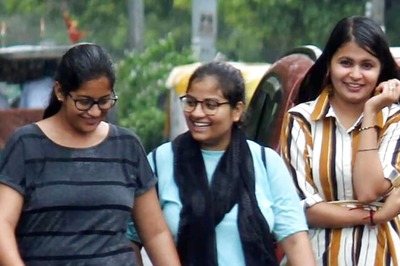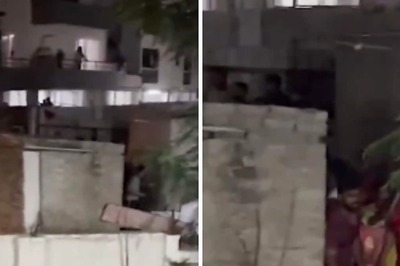
views
HYDERABAD: In an achievement of sorts for disaster management in the country, the Hyderabad-based Indian National Centre for Ocean Information Services (INCOIS), on Wednesday conducted its second tsunami mock drill in less than two years. The drill christened Exercise IOWAVE 11, is a sign of the relentless pursuit of INCOIS, NDMA, MHA and other government agencies to ensure total safety for India’s coastal inhabitants.With a public demonstration of its tsunami early warning systems and a well coordinated communications backup, India has finally taken the role of an Indian Ocean tsunami advisory country, a role assigned by UNESCO’s intergovernmental Oceanographic Commission to the Regional Tsunami Advisory Service Providers (RTSPs) of the region, of which India is a part (the other include Australia and Indonesia).But what sets this drill apart from the one conducted in 2009, according to Srinivasa Kumar, in-charge of the Tsunami Warning Centre at INCOIS, is the ability to have roped in not just government organisations, but also people of coastal regions, who were provided information through their respective district disaster management agencies and involve them in mock evacuation exercises.The entire drill was centred around the 9.2 magnitude earthquake that resulted in a south-east Asian tsunami in December 2004.For the drill, the centre implemented one among 500 scenarios it developed over the years.Each of these in-built scenarios were designed based on different earthquake magnitudes, distance and epicentre with the aim of helping forecast tsunami models faster in the case of an actual tsunami.“The mock ocean tsunami simulated on Wednesday, originated off the north-west coast of Indonesia at 0630 hours and was set to end its course at 1830 hrs off the coast of South Africa,’’ Kumar said.With this 12-hour tsunami window open, the centre aimed to test the capabilities of its Indian Ocean Tsunami Warning and Mitigation System (IOWTS), for computation of real-time seismic data to create tabletop tsunami models.Fifteen bulletins were issued during this period to national and regional agencies.In Andhra Pradesh, the district disaster centres at each of the nine coastal districts handled this information, while in some villages of Pudduchery, actual evacuation of people took place.The sensors placed across the Indian Ocean played an important role in relaying signals related to wave data to the centre.According to Uma Devi, a scientist at the centre, “for the earthquake that struck off the Sumatra coast, the centre received warning signals within 6 minutes.The signals were then relayed via GTS, e-mail, SMS, web services and fax to agencies within and outside India.” In future the public would be warned about the tsunami within 10 minutes of an underwater earthquake anywhere in the Indian Ocean.Currently the closest underwater seismic sensitive point to India is in the Andamans and it takes close to two hours for a tsunami originating there to strike the Indian coast.




















Comments
0 comment